How old do dogs of different breeds grow?

When a new little resident appears in the house - a puppy, all attention becomes riveted to him. We try to do everything to keep him healthy and comfortable. Of course, special attention is paid to the growth and development of the puppy.
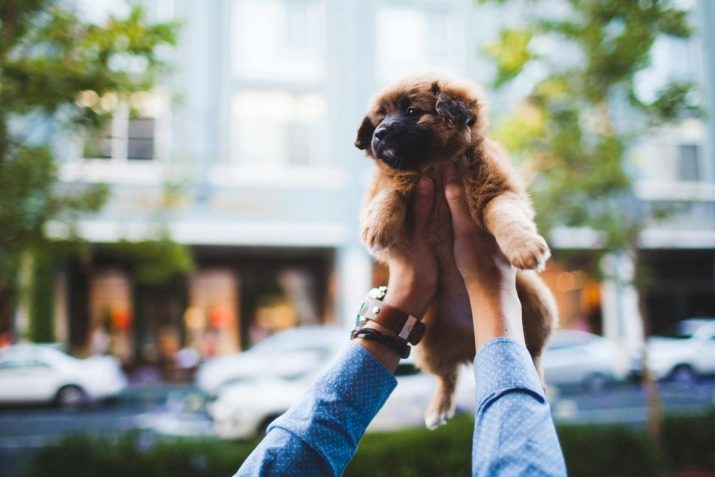
In fact, this is very important: the sooner a problem is revealed, the easier it will be to solve it.
In this article, we will look at the age to which different breeds of dogs grow, and also find out what factors affect the proper development of an individual.
Growing up periods
To track a dog's growth, you need to know how it develops with age. There are 5 main stages.
- Embryonic. This is the time the puppy spends in the womb. In him, organ systems are laid, the individual itself is formed. The puppy gains weight from 6 to 500-600 grams (depending on the breed).
- Sucking puppy. This is the period from the birth of the dog to 1.5-2 months - the time when the puppy is completely dependent on the mother: she feeds him and spends most of the time with him. Teeth begin to erupt, the puppy learns the world around him, grows up about two times.
- Puppy. From 2 months to 6. At this time, the baby usually has new owners, it is very important to properly adapt it to new, unfamiliar food.
- Young growth. At this stage (from six months to a year), the character of the dog is laid. It is very important to start training your pet during this period. Also at this time, puberty occurs.
- An adult dog. This is the last stage of development - from one to three years. The dog practically does not grow, it mainly builds up muscle mass. By the end of this period, the dog's skeleton is fully formed.


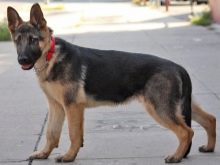


Factors affecting growth
Some dog owners may be worried about how well their pet is growing. Most often, they simply do not notice the development of the puppy, since after six months it begins to grow evenly and slowly. Still, several factors can influence the development of a dog.
- The size of the pet and the speed of its development depend primarily on the breed of the dog: small ones develop faster than large species.
- It is important to remember that males are larger in size and weight than females.
- Nutrition of the puppy plays an important role in development. If you provide the correct diet for the baby, then, perhaps, he will be even slightly larger than other representatives of his breed.
- Health is the key to high-quality growth of a pet, because a sick puppy will spend all its strength on recovery and maintenance of the body, and not on the process of growing up.
- In order for the puppy to be in normal tone, so that his muscles and skeleton are formed correctly, it is necessary to give him constant physical activity. This concept includes: playing with a pet, walking in the fresh air, training.
- The presence of genetic diseases.

The diet
Throughout its life, a dog must eat properly in order to maintain its health. But, as mentioned earlier, it is for the puppy that it is important that only useful substances are in its diet, since during this period the bone skeleton and the body are formed.
When feeding a pet, the owner must adhere to a number of rules.
- You need to feed a pet up to three months old 5-6 times. From 3 months to six months, the frequency of feeding is reduced to three. After six months, the dog needs to be given food twice: in the morning and in the evening. These are average values, but they can vary depending on the breed. Remember that overfeeding, like underfeeding, is detrimental to your pet's body.
- The first complementary food should be introduced somewhere in 2-3 months, but it is necessary to gradually accustom the puppy to the new food. You can start with dairy products, cereals, boiled vegetables, meat (boiled). In no case do not give your baby offal: small bones, skin, offal, etc., since his body is not yet able to digest such heavy food.
- The food can be given to a puppy from 3 months, and you need to buy super-premium or holistic types: such ready-made food contains all the necessary substances.
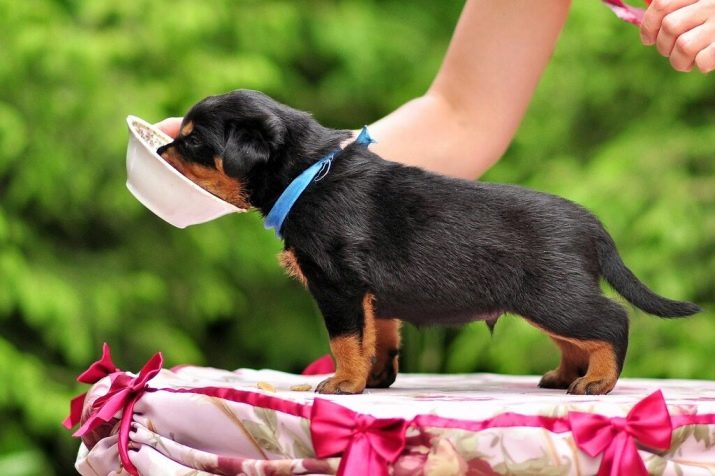
If you want your pet to eat natural foods, then you need to know what food you can give and what not. The fish in the puppy's menu should only be boiled; it is advisable to heat the meat too, as it can be infected with helminths. Tubular bones, overly fatty, spicy and salty foods, as well as sweets, potatoes and pastries should be excluded. You can give dairy products, cereals, vegetables, dried fruits. Large pork or beef bones are also helpful for the dog.



Vitamins are also needed for the proper development of the puppy. These can be purchased at your pet store or veterinary pharmacy.
Water should always be available for the pet, and whey and broth can also be given.
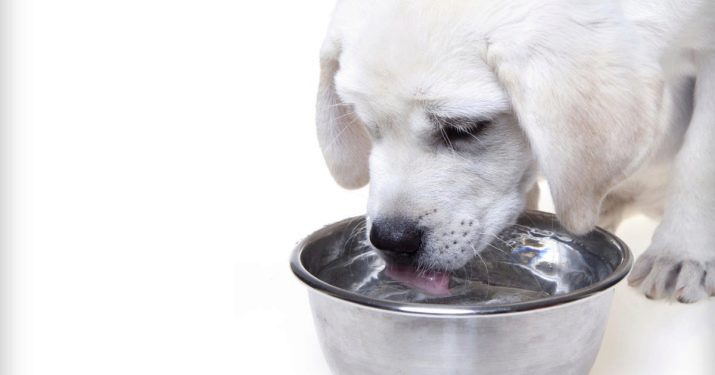
Treatment
In order for the puppy to develop and grow correctly and quickly, it is necessary to carry out disease prevention on time.
Deworming is carried out every 3 months and only when the puppy is already 60 days old. Also, during this period, the baby can be vaccinated against a number of diseases, treated against parasites: fleas, ticks. It is necessary to make scheduled visits to the veterinarian.
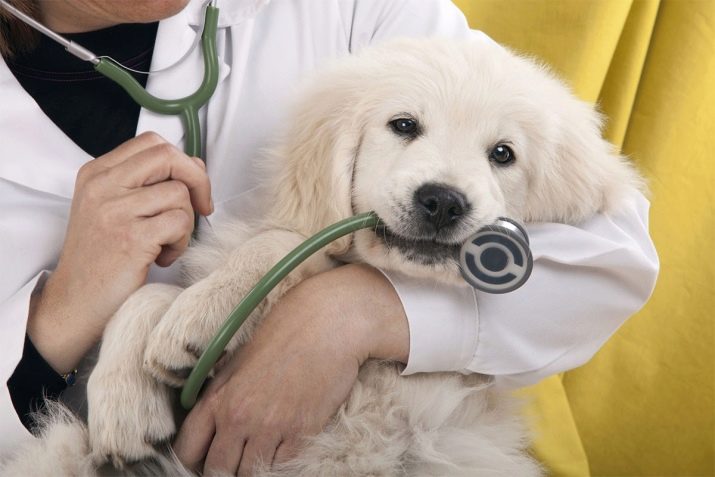
To avoid an eye infection, you need to rinse the puppy's eyes with a decoction of chamomile every few days.
Breeds
Different breeds of dogs increase in size in different ways. The rapid growth of the puppy continues up to 6 months, and after that it slows down. In some breeds, growth is noted up to 3 years.
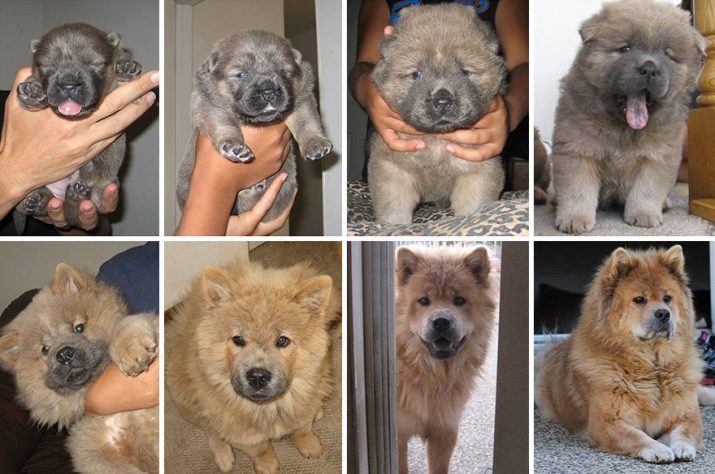
Small
Small breed owners often become concerned that puppies stop growing after six months. But this is normal, because small individuals develop much faster. Some dogs reach puberty at 7-8 months.
- Yorkshire Terrier - This is one of the most popular small breeds.They are called Yorkies for short. Development lasts up to 8-9 months. Their puppy appearance does not change until old age; these dogs are perfect for keeping in an apartment.
- Pug Is a friendly but very lazy dog. Its weight can reach 6–8 kg, and its height can be up to 32 cm. This dog develops mainly up to 9 months, actively gaining weight.
- Pekingese Is a Chinese breed. This dog is good-natured, but stubborn and wayward. She has a very long coat and therefore requires careful maintenance. The height at the withers is up to 23 cm, and the weight is up to 5 kg. Development - up to 8 months, sometimes up to a year.
- Pomeranian has a toy appearance. These mini-dogs can be 18 cm tall, in some cases reach 30 cm, weighing up to 3 kg. It grows only up to six months, and after that bones and muscles become stronger.
- Staffordshire bull terrier. Its height is from 30 to 40 cm, and its weight is up to 15 kg. Staffs are very intelligent, loyal and loyal dogs. They should always be in the company of a person. An adult becomes at 10-12 months.
- Dachshunds - famous hunters. They grow up to 8 months in height and length, and then in breadth.
- Toy Terrier - smooth-haired, cute and playful dog. She is known for her furry ears. Growth - only 25 cm. Grows up to six months.
- Chihuahua Is the smallest dog breed in the world. Her height does not exceed 23 cm, and her weight is 3 kg. She is a very loyal, energetic and graceful dog. Grows up to 8 months.



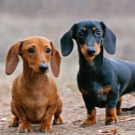

Average
- Cocker Spaniel - a very beautiful, graceful and kind dog, as well as a well-known hunting breed. The height of such a dog is about 40 cm, and the weight is 15 kg. The exterior is fully formed by the year.
- Laika - freedom-loving, but loyal dog, an excellent hunter. She is very inquisitive and active, often touchy. Height limit - 63 cm at the withers. Growth continues up to 10 months.
- Husky - benevolent and friendly dogs, but at the same time they are rather stubborn and wayward. This breed of sled dogs, therefore, they are strong and hardy. Growth at the withers - 50-60 cm. It grows in height up to 1 year, and then continues to build up muscle mass for as many as 2 years.
- Chow Chow has a devoted, calm and independent character. This excellent watchdog grows up to 56 cm and reaches maturity at 11 months.
- Beagle. We are used to seeing dogs of this breed in many American films, which is why it gained such popularity. Beagle is friendly, smart and level-headed, so it is perfect for children. Its height is about 40 cm, full maturation occurs in a year and a half.


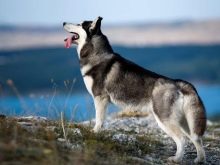
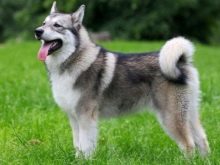

Large
Getting a large breed dog requires preparation, as these species require investment and careful grooming. In addition, large dogs require space and constant physical activity.
- English Mastiff. The average height is 70–90 cm, and the weight can reach 110 kg. Powerful, courageous, peaceful and balanced dog. Active growth - up to a year, and the exterior is formed up to 3 years.
- Next on the list of big dogs - St. Bernard... He is very calm and friendly. Previously, these dogs were used as rescuers. Height ranges from 70 to 90 cm, weight - more than 100 kg. It actively grows up to a year, and finally takes the form of an adult dog by the age of 3.
- German dog - the tallest dog. The average height is 80 cm, and the weight reaches 90 kg. The tallest representative of the breed is the dog Zeus, his height is 112 cm. At the withers, these dogs grow up to one and a half years, continue to increase their mass up to three years.
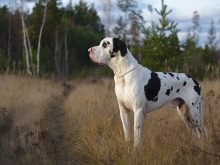


Growth control
In order not to miss any deviations in the development of your pet, it is important to mark the growth of the puppy at least once a week. Parameters can be measured using well-known devices that everyone in the house probably has.
- The weight. The puppy can be weighed with a household scale or with food - it depends on the size of the breed.
- Height at the withers can be measured with a tape measure.
- Sternum girth can be measured with a centimeter.
- Height and width of front and hind legs can also be measured with a centimeter tape.
- Length dogs measure from withers to tail - with a tape measure or centimeter.
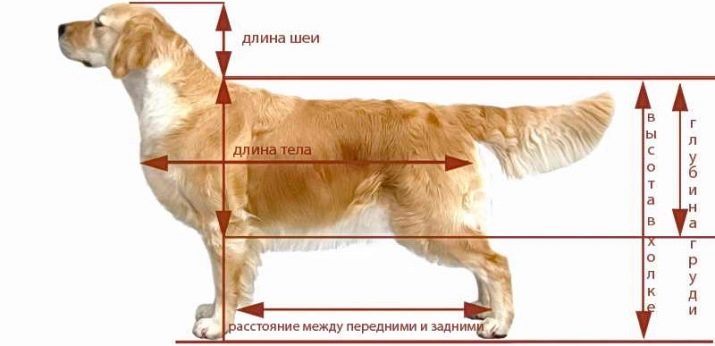
Conclusion
The growth and development time of a dog is directly dependent on breed, genetics, nutrition and health. The most important thing is to take care of the pet, pay enough attention and, of course, love.
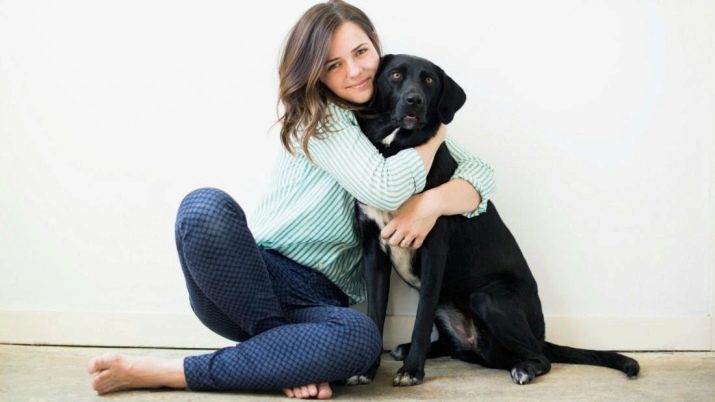
To see how the dog grows, see the video below.






































